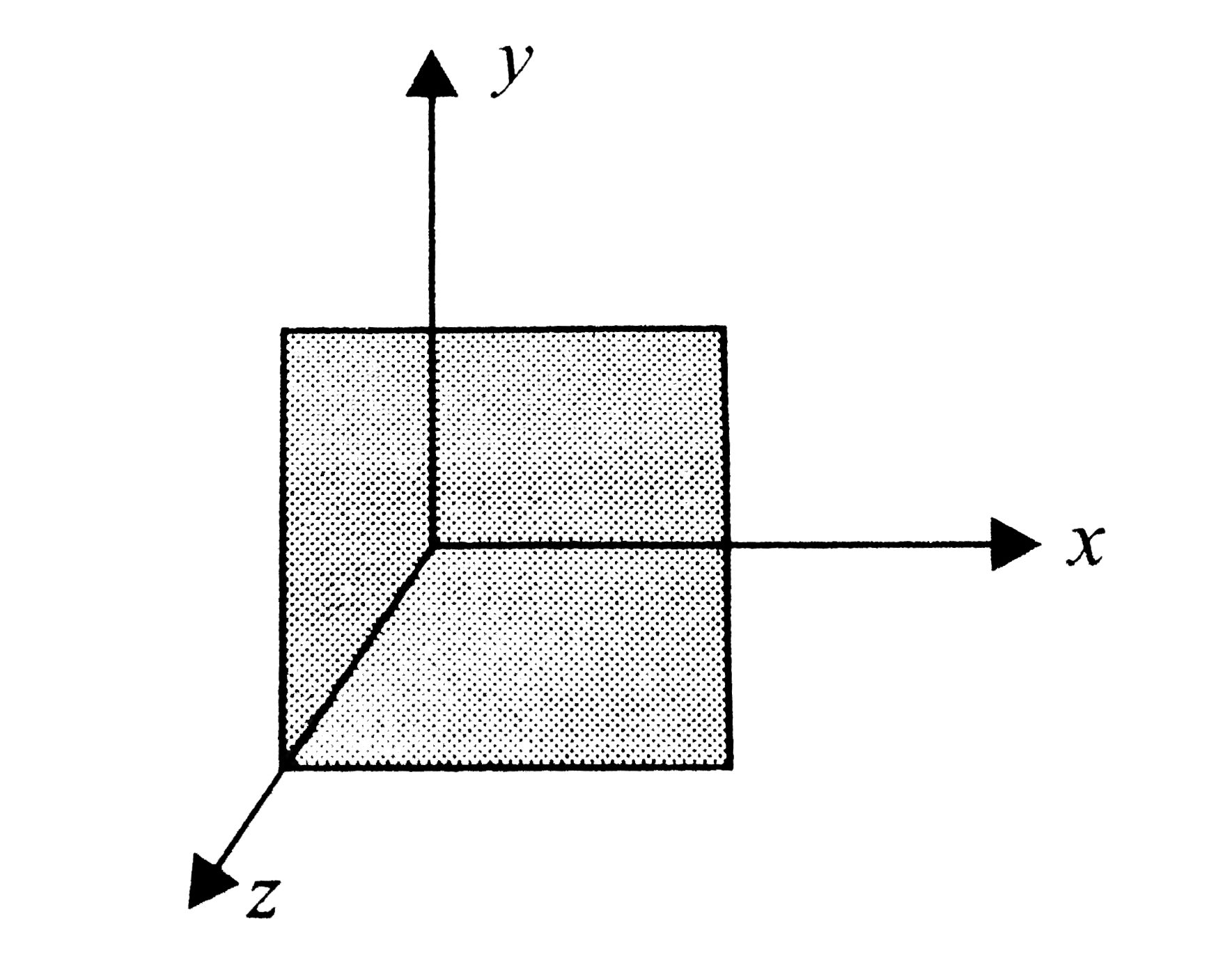A flat, square surface with sides of length L is described by the equations
x=L,0≤y≤L,0≤z≤L
The electric flux through the square due to a positive point charge q located at the origin (x=0,y=0,z=0) is
q4ε0
q6ε0
q24ε0
q48ε0
The correct Answer is:C
c. Imagine a charge q at the center of a cube of edge length 2L
Then ϕ=q/ε0. Here, the square is 1/24 of the surface area of the imaginary cube, so it intercepts 1/24 of the flux. That is ,
Φ=q24ε0

Topper's Solved these Questions
- ELECTRIC FLUX AND GAUSS LAWBook:CENGAGE PHYSICSChapter:ELECTRIC FLUX AND GAUSS LAWExercise:Multiple Correct
Explore 8 Videos
- ELECTRIC FLUX AND GAUSS LAWBook:CENGAGE PHYSICSChapter:ELECTRIC FLUX AND GAUSS LAWExercise:Comprehension
Explore 36 Videos
- ELECTRIC FLUX AND GAUSS LAWBook:CENGAGE PHYSICSChapter:ELECTRIC FLUX AND GAUSS LAWExercise:Subjective
Explore 12 Videos
- ELECTRIC CURRENT AND CIRCUITBook:CENGAGE PHYSICSChapter:ELECTRIC CURRENT AND CIRCUITExercise:Interger
Explore 8 Videos
- ELECTRIC POTENTIALBook:CENGAGE PHYSICSChapter:ELECTRIC POTENTIALExercise:DPP 3.5
Explore 14 Videos
Similar Questions
Knowledge Check
A point charge q is placed at a distance a/2 directly above the center of a square of side a. The electric flux through the square is
Aqε0Bqπε0Cq4ε0Dq6ε0a point charge q is placed at the centre of a cylinder of length L and radius R the electric flux through the curved surface of the cylinder is
Aqε0L√L2+R2Bqε0L√L2+2R2Cqε0L√L2+4R2Dq2ε0Asserions: Two points charges +Q and −Q are fixed at point A(+a,0,0)and point B(−a,0,0) respectively.Then the magnitude of electric flux due to electric field of either point charge through infinite y-zplane (that is x=0 plane) is less than magnitude of net electric flux due to electric field of both charges through that plane (x=0 plane)
Reason :the magnitude of the net electric flux through a surface due to a system of point charges is equal to sum of magnitude of electric flux through that surface due to each of the point charge of the system.ABoth (A) and (R) are true and 'R' is the correct explanation of A.BBoth A and R are true and R is not the correct explanation of AC(A) is true but (R) is falseD(A) is false but (R) is true
Two charges of magnitude −2Qand+Q are located at points (a,0) and (4a, 0) respectively ,What is the electric flux due to these charges through a sphere of radius 3a with its centre at the origin?
View SolutionTwo charges of magnirude −2Qand+Q are located at points (a,0)and(4a,0) respectively .
What is the electric flux due to charges through a sphere of radius '3a' with its center at the origin.
View SolutionA point charge q is located at a very small distance form the center of a very large square on the line perpendicular to the square passing through its center Determine the approximate electric flux through the square due to the point charge.
View SolutionTwo charges of magnitudes +4Q and -Q and located at points (a, 0) and (-3a, 0) respectively. What is the electric flux due to these charges through a sphere of radius '2a' with its centre at the orgin ?
View SolutionA uniformly charged square plate having side L carries a uniform surface charge density σ. The plate lies in the y−z plane with its centre at the origin. A point charge q lies on the x-axis. The flux of the electric field of q through the plate is ϕ0, while the foce on the point charge q due to the plate is F0, along the x-axis. Then,
View Solution

